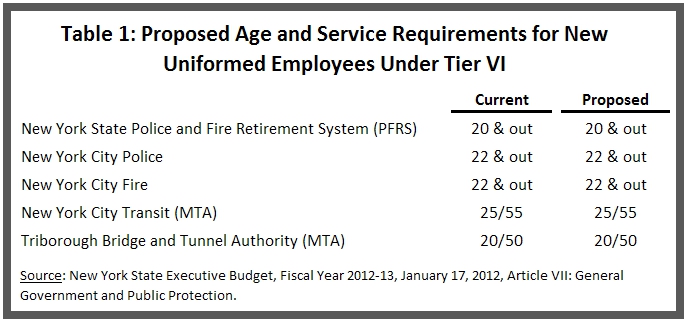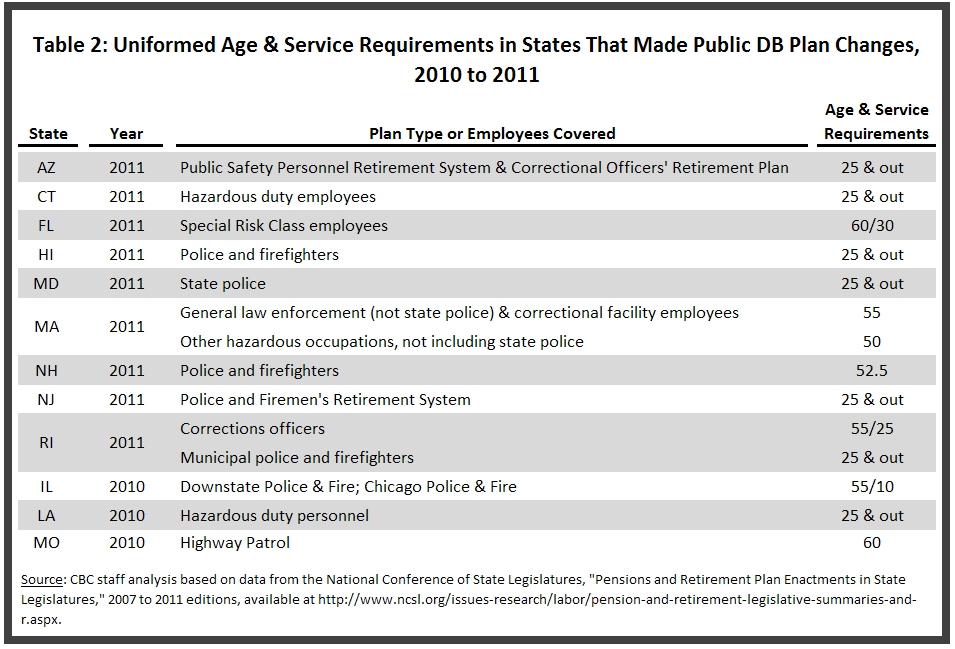Pension Reform: Firefighters Will Not Be Running Into Burning Buildings at Age 65
One misconception in the current debate on the pension changes proposed by Governor Andrew Cuomo – known as Tier VI – is that employees whose duties require certain physical capacities will be forced to work until age 65. This is patently untrue: The Tier VI proposal does not fundamentally change the retirement age for police and fire personnel. New uniformed employees and other special duty personnel will continue to be able to retire with full pension benefits as soon as minimum service requirements are fulfilled. And comparative analysis of changes made to special plans in other states since the recession began shows that New York's terms are still relatively generous.
Currently, newly hired New York City Police Officers and Firefighters are eligible to retire after 22 years of service regardless of age; this would remain unchanged in Tier VI. Similarly, “20 and out” provisions requiring 20 years of service with no minimum retirement age would continue for future State and local members of the New York State Police and Fire Retirement System (see Table 1).

In fact, the only age change that applies to these uniformed plans is an increase in the age at which members who leave for reasons other than retirement or death can claim a partial pension benefit from State and local governments and New York City. This age will increase from 62 to 65, and that, persumably, is the basis of the false claim that retirement ages will be increased to 65 for uniformed personnel.
Many states made changes to retirement benefits for uniformed personnel in the wake of the recession. Table 2 shows changes made in 12 states from 2010 to 2011. Some moved to 25 and out plans; new uniformed hires in various classes of employment in Arizona, Connecticut, Hawaii, Maryland, New Jersey, and Rhode Island were placed in 25 and out plans. In 2010 new hazardous duty personnel in Louisiana began in a 25 and out plan, as well. Six other states set higher retirement ages and/or service requirements for some uniformed personnel. Florida, for example, adopted a 60/30 plan for its new special risk class employees and Massachusetts increased retirement ages for three out of four types of law enforcement employees to 50 and 55. In Illinois new uniformed employees of Downstate and Chicago will be required to reach the age of 55 and have at least 10 years service to claim a pension.

New York's plans, which allow 20 or 22 and out, are generous compared to what other states did to change their plans during the recession. Governor Cuomo’s Tier VI proposal does not require any uniformed employee or other physical duty personnel to work beyond the point at which they can perform the required duties. The police officers and firefighters upon whom we will depend to protect our physical safety still will be able to retire with full pensions in their mid-40s and early 50s as many of them do now.
By Elizabeth Lynam